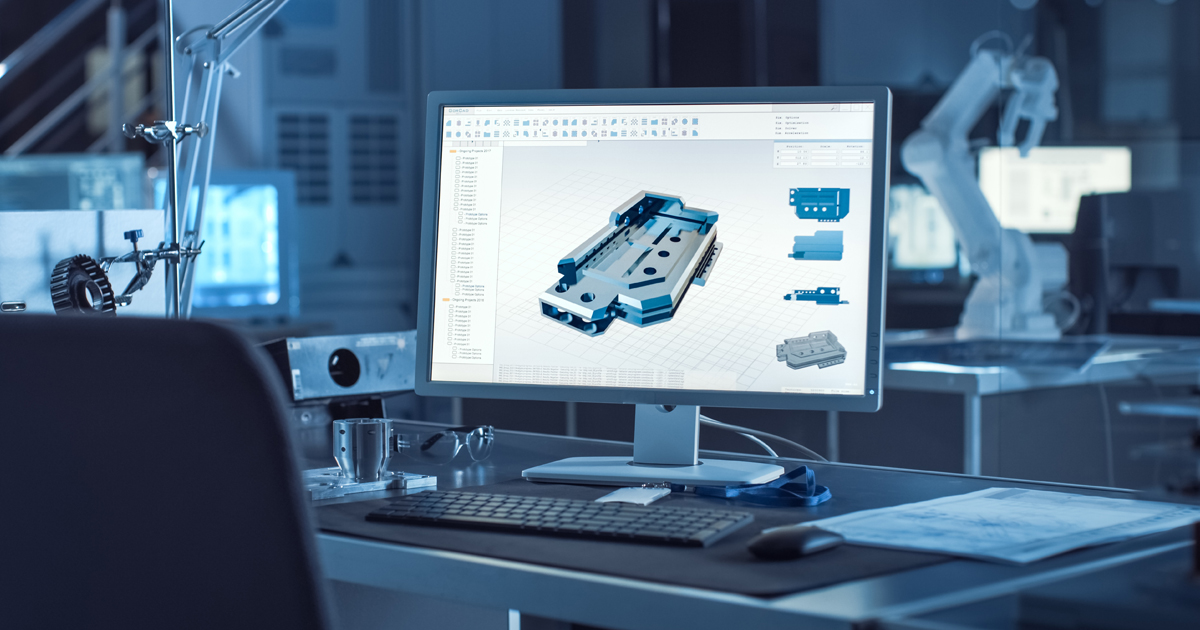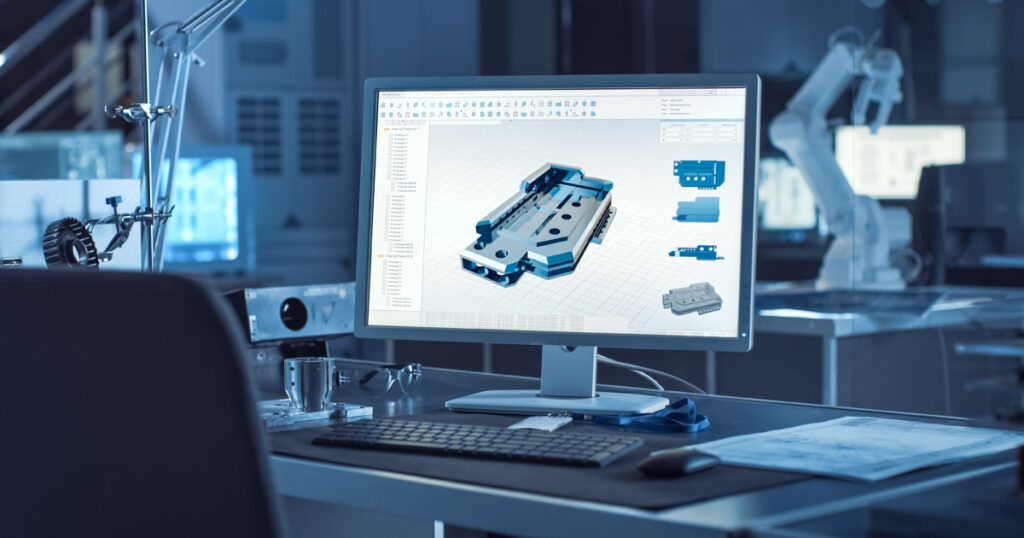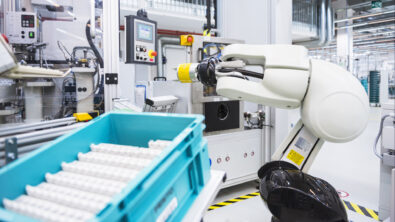Deliver the industrial machines your customers want using Intelligent Performance Engineering: Podcast

Digital tools and their capabilities are making it easier than ever for the industrial machinery industry to deliver their products more quickly and cost-effectively. That’s because today’s digital solutions make engineering processes more efficient while reducing the amount of risk companies need to take to succeed.
Intelligent Performance Engineering from Siemens sets out to overcome the biggest challenges machine builders currently face. Today’s machines are more complex with mechanical, electrical, and software capabilities.
The designers and engineers building these machines, parts, components and tools need to be able to collaborate. Intelligent Performance Engineering encourages innovation with the aim of building more productive, more reliable machines capable of meeting high performance objectives.
In this podcast, Bill Butcher, Rahul Garg and Giulio Camauli from Siemens Digital Industries Software talk about Intelligent Performance Engineering. They discuss the biggest challenges the industrial machinery industry is facing, how Intelligent Performance Engineering addresses those challenges, and where the digital twin fits.
Developing industrial machinery requires finding the best balance between productivity, accuracy, reliability, and efficiency, and being able to do that digitally can only help you out-innovate your competition.
Bill Butcher, Industrial Machinery Marketing, Siemens Digital Industries Software
Listen to the Podcast
For this series I feel very fortunate to have with me two leading experts representing the industrial machinery industry who is Rahul Garg and Giulio Camauli. Rahul is the industry leader for Siemens industrial machinery industry and Giulio is the industrial machinery industry leader for the simulation and test solutions within Siemens digital industries software. Both Rahul and Julie have over 30 years of experience respectively, and I’d like to thank both of you for taking the time to talk with me today.
So, we know that the machinery manufacturers are faced with many challenges. Of course, one of the biggest challenges is complexity. This complexity surrounding new machine introduction is only increasing for machine builders, so I’d like to start and ask to help the listeners understand: what is intelligent performance engineering, and why is this critical for industrial machinery companies to develop new engineering practices in order to keep pace with this growing complexity associated with machine introduction?
So Rahul, let’s start with you. The term, “intelligent performance engineering,” what does it mean and why is it important to machine manufacturers?
Rahul Garg: Thank you Bill. When you look at the industrial machinery companies in today’s day in age, they are being faced with some very unique challenges. To expand on the complexity you mentioned, they are being demanded by their end customers to produce equipment that solves their specific use cases. They’re being asked to produce machines that are faster throughput with better quality. They’re being asked to improve the serviceability of their machines. They’re being asked to provide their machines as a service where their end customers do not even need to pay for the equipment but pay on a on a per usage basis.
These are all new trends that are coming into the picture that the machinery company is trying to determine how best to address. One of those areas that we are trying to put a lot of attention is around the operations and the performance of the machine. When you look at the performance of the machine, it is dependent upon many factors, and when you’re designing and engineering the machine you have to think through all those aspects before you start making the machine. So the up-front design engineering process when you’re trying to determine the best optimal way by which the machine can serve the end customers needs becomes very critical.
Intelligent performance engineering is the digital thread that we have put together to address the customers’ needs to address the machinery customers’ needs of ensuring that they are building the machines with the highest possible reliability with the highest possible performance while meeting the end customers needs and also taking advantage of all the new technologies that are coming into picture addressing the customers desires to have the machine available as a service.
Bill Butcher: OK, if I’m hearing you correctly, you said you mentioned digital thread, and also this kind of relates to you know the very popular phrase which is out in the marketplace today to digital twin. So to support the machine design in the context of simulation for machine manufacturers today, Giulio, can traditional process support this digital twin approach that Rahul just talked about?
Giulio Camauli: So thank you Bill for your question and your final introduction. Let me say that one of the most important aspect of designing new industrial equipment or modifying an existing design lies in the verifying and testing procedure. Now it will perform before it reached the customer. So everybody can understand that it costs much less to fix a problem identified during the designing process than later in the product development cycle.
As a consequence, industrial OEMs have adopted a collection of digital simulation and analysis tools used to understand how design choices affect the performance and failure modes for a component, device, or machine. In the traditional approach, we must say that there are still manual handoffs between design and simulation processes.
Engineers can also use design level simulation that then provide a baseline assessment of the design or as a definitive design analysis or eventually, they need some more advanced simulation. As enterprises attempt to deliver machines with faster cycle rates and delivery schedules are being compressed, teams and feeling pressure to do more simulation upfront rather than test many physical prototypes and they assume the physical tests are sufficient. So let me add that the best option still have simulation and test working together efficiently.
Bill Butcher: OK. Thanks, so these are some big topics we’re talking about right at high level topics we’re talking about digitalization. Neither of you have mentioned it yet but industry 4.0 is a topic that most machine manufacturers are aware of. And it seems like there’s pressure building up between these traditional approaches Giulio that you just mentioned and the desire to stay competitive with the growing complexity associated with a new machine or deduction.
So, Rahul we’ll come back to you. Would you say that technology has been the biggest catalyst for change in the machinery industry so far or are there other factors that are creating you know the need for this advanced technology solution in the machinery space?
Rahul Garg: Technology has certainly been a catalyst to get the industrial machining companies to determine what they should do. But there are many more that have been driving the companies to be looking to do something differently. It’s all the way from one of the issues around the customers demanding the machines in their own specifications and their own customized requirements to make sure that the machine needs and exceeds the performance requirements of those with that specific use cases.
Those personalizations and use cases are increasing by the day and machines need to support those use cases. The other big issue that comes about is around the global competition. Being able to differentiate your product. Being able to innovate faster now. Being able to serve your customers much faster pace at a lower cost. So being able to address many of those needs have traditionally been around now technology has become the catalyst that has fueled this whole process and has really gotten all companies to consider and evaluate how they are meeting the needs all these challenges and how digitalization can help them in that process.
Bill Butcher: OK. So Giulio, coming back to you. You know, Rahul mentioned about technology and how technology is, you know, continuing to in advance. They go through a couple of examples he just showed. Also, expectations on customization from consumers is increasing, right? And all this leads to this continued increase in complexity that tests the limits of the technology investments. It’s kind of a chicken and egg, right?
So with the need to address the growing demands of flexibility and complexity, it appears that this can’t be done without the ability to quickly evaluate machine behaviors and provide information back into model. Do you see this happening today? Is this a standard process or is this something we’re reaching for?
Giulio Camauli: We have to say that someone will work is involved in running the simulations used to verify various characteristic of the equipment and this simulation are often performed by different tools. As a result, the basic simulation that’s always reflect that interdependency of electromagnetic interference, structural loads, heat, and vibration together.
This is becoming more of an issue with smarter equipment, which increases the complexity of wiring, electronics, and software. The designer may run a basic analysis to prove the design is safe, but this may not allow the designer to explore the performance ramifications of various engineering tradeoffs. The designer may also over-engineer a design, so that they don’t have to run as many tests.
This can lead to other cost, weight or reduce the performance of the machine in order to meet safety requirements. And more complex processes that are adopted by the analyst to address the complexity of the simulation tools and the lack of integration into the design tool. Delays in the process can also mean that an analysis is being done on an outdated design and the risk of this risk is very very high.
Bill Butcher: I want to come back to one of the terms you just use there which is the lack of integration. It seems to be in conflict with some of these other terms we’re hearing about that are taking over the marketplace today. You know the terms, ‘digitalization,’ more specifically the ‘digital twin.’ These are high level topics that really imply high levels of integration or the desire to have high levels of integration. So more specifically towards the digital twin in the context of intelligence performance engineering, can you elaborate a bit on the concept of digitalization and why it is so important for machine builders?
Giulio Camauli: Yes, industrial machine manufacturers are currently under pressure to deliver faster and more reliable and smarter machines. So the comprehensive digital twin can improve the ability to simulate different characteristic of components and equipment more accurately. Digital trends can help automate the processes of hearing information between engineering teams, analysts, production, test team, and service engineers.
This allows teams to evaluate the capability and limitation of product variations in the most efficient way. Better integration between designers, analysts, and live data can enable OEM’s to adopt intelligent performance engineering practices for improving performance while ensuring safety, reliability, and cost effectiveness.
Bill Butcher: OK thank you. That’s a good explanation. Appreciate that Giulio. Rahul, at the start of this podcast, you described, uh let me see if I got this correct, intelligent performance engineering as an approach that improves reliability and addresses risk by building a set of highly accurate models that help predict product behavior during the lifecycle phases and you have termed this approach intelligent performance engineering. Can you help the listeners understand what exactly is intelligent performance engineering or what makes it so special? And why is it a unique approach in the marketplace today?
Rahul Garg: One of the things that we have been looking at is understanding how customers are addressing the needs of their product engineering process and what are some of the challenges that they have.
Based on those issues that we have identified, there are three key areas that we are trying to focus in on. The first one is what we call is a multiphysics simulation, which is basically giving them the ability to balance multiple attributes under one umbrella. This is one of the issues that many companies face where they may do a thermal analysis or stress analysis, but then how do you kind of figure out the stress and thermal analysis together? What happens when the heat rises and what’s the impact on the stability of that product? Those are some of the multiphysics simulation angles that we are trying to bring in, addressing many needs that typically get addressed one at a time.
The second one is integrated design and simulation. This is trying to look at how performance engineering can be addressed all the way from the front end product design to the commissioning process and making sure that the models that are used are consistent and with the high variability and the number of changes that understand to address you do not lose any information you can keep all the information in sync, which becomes very very critical.
And then the last piece and not the least is a closed loop validation. So this is where we are really trying to expand the test horizon and not just look at the test bed or the prototype because as your test environment, but really look at your customers’ operations, your machine operations as your test environment. So as you get more information from the usage of the machine, you are getting real time feed from the usage of your machine and you’re using that as part of your test analysis as well. So this is basically bringing in close loop uh validating your usage, your testing, your front end simulation and design, and keeping all of that in sync, so that we can evaluate whether even your test parameters and test right or wrong.
Bill Butcher: That’s wonderful. So I think I’ll take a pause here and wrap up this first podcast for the listeners to let know that we will be examining each one of those differentiators that Rahul just described in our next subsequent podcast. So I’d like to thank both for Rahul and Giulio for your insights today. It’s clearly apparent that as industrial equipment becomes more complex, leading industrial OEMs must find a way to build more effective and trustworthy simulations.
Developing industrial machinery requires finding the best balance between productivity, accuracy, reliability, and efficiency, and being able to do that digitally can only help you out innovate your competition. So please join us for our next podcast on intelligent performance engineering as we take that deeper dive, I talked about the benefits of multiphysics simulation and how this can be applied to machine builders. Have a great day, guys.
The industrial machinery industry’s biggest challenge is complexity
New machine introductions are only getting more complex. Mechanical, electrical, and software capabilities must coexist without hindering a machine’s performance, and most machinery companies are still trying to determine how to address this.
When you look at the industrial machinery companies in today’s day in age, they are being faced with some very unique challenges. They are being demanded by their end customers to produce equipment that solves their specific use cases. They’re being asked to produce machines that are faster throughput with better quality. They’re being asked to improve the serviceability of their machines.
Rahul Garg, Vice President of Industrial Machinery, Siemens Digital Industries Software
Machine builders need to take advantage of new technologies capable of embracing machine complexity, so they can meet and even exceed customer demands. A comprehensive digital twin can help accomplish this by providing a virtual representation of the product that can be continuously updated to meet new specifications and requirements.
The digital twin is at the center of the Intelligent Performance Engineering solution from Siemens. A comprehensive digital twin accelerates engineering processes, results in more reliable, smarter machines, and helps engineers continue to innovate and continuously improve product designs.
Intelligent Performance Engineering explained
Intelligent Performance Engineering combines multiphysics simulation, integrated design and simulation, and closed-loop validation into a single solution. Each aspect plays a specific role, but all together, they allow designers and engineers to build more productive, reliable and flexible products.
Industrial machine manufacturers are currently under pressure to deliver faster and more reliable and smarter machines, so the comprehensive digital twin can improve the ability to simulate different characteristic of components and equipment more accurately.
Giulio Camauli, Simcenter Industry Lead, Siemens Digital Industries Software
Multiphysics simulation gives engineers the ability to balance multiple attributes under a single umbrella. When a company can perform multiple different analyses at the same time, they gain a better understanding of how different forces affect one another. For example, different operating speeds may affect temperatures, which can change the performance of a machine. Understanding this earlier in the design process saves time and money, and it accelerates engineering.
Integrated design and simulation ensures models are consistent by using a digital twin. A comprehensive digital twin gets constant updates with customer changes, new regulatory requirements, and design improvements. This avoids wasted work on simulating and testing outdated designs, and it ensures all information associated with a machine stays in sync with the physical machine.

Closed-loop validation expands testing and looks beyond a prototype. It takes information from the machine’s operation in the field and compares it to simulations and tests during the design phase. Real-time operation data gives machine builders a better understanding of how machines and equipment are actually being used in the field, and that information can then be used to make improvements, accurately predict future maintenance, and build better machines.
Learn more about Intelligent Performance Engineering in this podcast series
The embedded video above is the first of four podcasts on Intelligent Performance Engineering. It gives a broad overview of what Intelligent Performance Engineering is and how it helps machine builders and equipment manufacturers overcome the challenges they’re currently facing.
The following three episodes go more in-depth into each aspect of Intelligent Performance Engineering:
- Episode 2: Multiphysics simulation
- Episode 3: Integrated design and simulation
- Episode 4: Closed-loop validation
Continue listening to Bill Butcher, Rahul Garg, and Giulio Camauli to find out how Intelligent Performance Engineering solutions can help the industrial machinery industry continue to improve how it’s building new and innovative products in an evolving marketplace.


